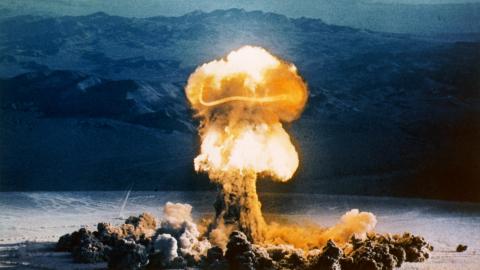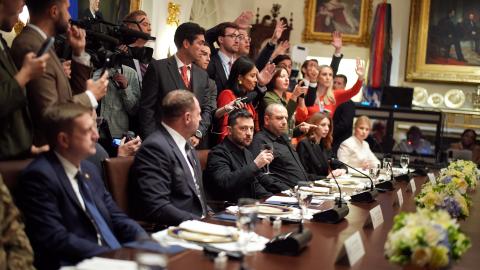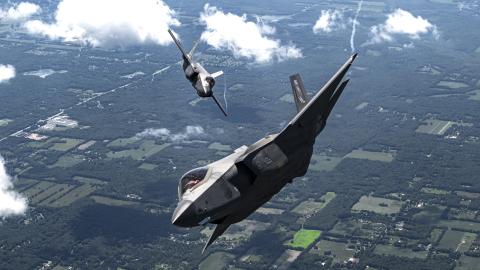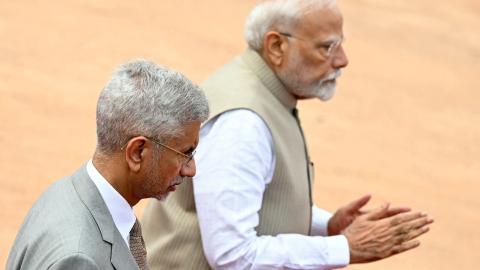India’s multi-alignment approach has helped it navigate the geopolitical and geoeconomic challenges stemming from the unpredictable policies of the United States President Donald Trump’s second administration. Although under pressure from the White House regarding trade, India remains critical to the U.S.-led Indo-Pacific strategy.
The South Asian nation also maintains long-standing ties with Russia and is a prominent member of non-Western groupings such as BRICS and the Shanghai Cooperation Organisation (SCO). Moreover, it has forged robust economic and security partnerships with countries across Europe, the Middle East and Asia.
China remains India’s long-term rival, but so far, New Delhi has managed its relationship with Beijing with diplomatic subtlety and strategic foresight. Indian leaders emphasize engaging with the world as it is and view the country’s growing economy as a crucial factor in its pursuit of global recognition. As the post-Cold War global order continues to shift and transform, India will need to juggle its various relationships with greater dexterity, all in pursuit of its national interests.
The quiet giant
India is currently the fastest-growing emerging economy globally, with a gross domestic product (GDP) of $4 trillion. In terms of military capability, the country ranks fourth on the Global Firepower Index, which measures a nation’s defense capacities. It has become a preferred partner for both Western countries and those in the Global Majority.
With a labor force of 600 million and an average age of 29, India is a lucrative market that many businesses worldwide are eager to access. In recent years, there has been growing talk about India emerging as a potential alternative to China as the factory of the world.
Since the start of the Cold War, New Delhi has adhered to its doctrine of strategic autonomy, carefully steering clear of security alliances with any major global power. By doing so, it has maintained a significant presence in the geopolitical landscape. This includes participation in U.S.-led minilateral forums, such as the Indo-Pacific Quadrilateral Security Dialogue (the Quad) and its West Asian counterpart, I2U2, which comprises India, Israel, the United Arab Emirates and the U.S.
The U.S. and its allies consider India vital to their strategies to counter the economic, military and technological rise of China. However, New Delhi also remains deeply integrated within forums such as BRICS and the SCO, where Chinese interests play a major role. Despite its rivalry with China, including periodic violent incidents like the 2020 Galwan Valley clash, relations between the world’s two most populous nations have remained functional. China is one of India’s top trading partners, and in October 2024, the two countries signed an agreement to manage their border conflict, which has so far proven effective.
How multi-alignment boosts India’s global influence
For the past 78 years, India has effectively maintained its policy of multi-alignment and multilateralism. However, the factors that have historically benefited it now appear to be on the verge of change. During the Cold War, both the U.S. and Soviet Union courted India’s favor without encroaching on its South Asian sphere of influence. This dynamic allowed India to punch above its weight in the bipolar world order.
At the end of the Cold War, the U.S., as the dominant global power during a distinct unipolar phase, viewed India’s rise through the lens of strategic altruism. Since 1993, successive American administrations have supported the nation’s growth on diplomatic, economic and military fronts, integrating it into their vision of the global security architecture. Several factors, particularly the need to counter China’s rise, drove the alignment between one of the world’s oldest and largest democracies.
Beijing’s ambition to replace the U.S.-led global order with a China-led one poses a challenge to India’s influence in the Indian Ocean. China’s efforts to reframe the rules, institutions and alliances in the region are being pursued relentlessly through economic statecraft and the use of dual-purpose infrastructure like ports and logistics hubs. The Belt and Road Initiative (BRI) acts as a key driver for promoting China’s interests in the Indian Ocean.
China has become an economic, technological and military powerhouse that India is struggling to match. In 1989, the difference between the GDPs of India and China was only $50 million. By 2012, China’s GDP was six times larger, with a defense budget three times that of India. Today, China is the largest trading partner for all of India’s neighbors and claims the Indian Ocean region as part of its orbit of power. Moreover, it has made significant inroads into South Asia, particularly in Pakistan.
Concerns about China have ensured that, despite closer alignment with the U.S., India will continue to maintain strong relations with Russia. While the U.S.-led Indo-Pacific strategy focuses on maritime issues and on the Asian landmass, Moscow has consistently served as New Delhi’s continental counterbalance to Beijing. From India’s perspective, even a diminished Russia holds geopolitical advantages: It remains a key member of the United Nations Security Council with veto power, a reliable supplier of arms and a crucial source of energy. Its engagement with Russia is not merely a relic of Cold War nostalgia; it is a deliberate hedge.
Nevertheless, India has never depended solely on the global powers of the day. Instead, it has fostered strong relationships with various middle powers and smaller nations, whether through the Non-Aligned Movement during the Cold War or current alliances within the Global Majority. Particularly since the 1990s, New Delhi has built upon its historical connections with countries in Southeast Asia, East Asia and the Middle East, enhancing cooperation in economic, energy, technological and security sectors. This strategy of balancing and hedging has paid off over the decades.
Challenges in a shifting global order
The post-Cold War order, led by a confident U.S. with unmatched economic and military strength and no real peer competitor, gave India several advantages. It fostered an atmosphere conducive to globalization, allowing several middle powers to flourish economically. India’s economic liberalization, along with the flow of labor and capital, benefited considerably from American and allied support. The favorable international environment enabled India to pursue economic reform while preserving its strategic autonomy.
All of this rested on a globalized world, where supply chains crisscrossed land and sea boundaries. However, the Covid-19 pandemic and the rise of populism have led to a resurgence of protectionism. India will need to adapt to this new, more protectionist global reality. For instance, while India has the third-largest reserves of rare earth minerals in the world, it has only tapped into a small portion of these resources and continues to rely heavily on countries like China. It also depends on global partners for trade, access to energy, markets, technology and capital.
A U.S. administration that prioritizes building American industrial capacity, especially at the cost of open trade and access to cutting-edge technology, risks narrowing the very foundation of the India-U.S. partnership. This approach may compel New Delhi to seek other mutually beneficial alliances.
Since gaining independence in 1947, the Indian state has sought a multipolar world order. Although achieving this goal has been difficult, especially during the Cold War and in the years that followed, India has adeptly maintained its role as a pivotal middle power. Historically, its ability to navigate global upheaval relied on an engaged U.S., a robust Soviet Russia and a relatively weaker China. Today, India faces serious challenges in preserving its strategic autonomy, securing its borders and sustaining its ascent in a world with a disengaged America, a weaker Russia and a stronger China.
India’s key risk is that for the first time in 78 years, it has a territorial dispute with one of the two current global powers and a likely future hegemon, China. Beijing not only claims part of New Delhi’s sphere of influence but is also attempting to strategically encircle the nation. This development coincides with the current global superpower, the U.S., appearing to step back from its traditional role as the guarantor of international order, with its diplomatic focus often wavering.
Shaping the evolving multipolar world to suit India’s needs is more difficult than it was before, when the U.S., Europe and Japan viewed India’s rise as a key pillar of their own strategies.
Scenarios
Highly likely: India doubles down on its doctrine of strategic autonomy
Indian diplomacy faces a multifaceted challenge from an unpredictable American presidency, an aggressive China and a world in flux. While India will remain a significant partner even for a transactional U.S. administration, the lack of trust or assurance of support in the economic, military and diplomatic realms means that New Delhi is likely to revert to its default approach of multi-alignment.
For New Delhi, Washington’s response to the April-May 2025 India-Pakistan skirmishes was disappointing. India, a nation that fiercely guards its strategic autonomy, has always resisted third-party interference in its bilateral disputes, especially with neighbors like Pakistan or China. Indian leaders, including Prime Minister Narendra Modi, sharply dismissed the U.S. public claims and repeated assertions of mediating the ceasefire between India and Pakistan. The Modi administration is also wary of Washington seemingly re-hyphenating the two nations after two and a half decades, suggesting an equal treatment of India and Pakistan.
A less engaged America, or one that equates the two South Asian nations, risks reviving Cold War-era skepticism of the U.S. within India and will have an impact on economic and security ties.
The high likelihood that the Trump presidency will bring about continuous disruptions in the global order means that India is more likely to reinforce its traditional approach of strategic autonomy, rather than shifting closer to the U.S.
The Modi government will also assess whether actions by the second Trump administration are merely tactical maneuvers or signal a deeper, more lasting change in the U.S. strategic posture. That distinction could determine the limits of India’s engagement.
If it is the former, then India is likely to overlook public rhetoric and continue its current strategy of aligning with the U.S. while maintaining relations with Russia, balancing China and preserving ties with key partners in Europe, the Middle East and Asia. However, if sanctions are imposed on India for purchasing military equipment from Russia, the ramifications for India’s defense interests would be substantial.
A weakened Russia, facing further sanctions, will become increasingly dependent on China and lose its credibility as a continental counterweight; any loss of Moscow’s strategic independence will accelerate China’s influence across Eurasia. This also means India will struggle to purchase energy affordably and obtain supplies and spare parts for its Russian-made defense equipment.
Least likely: U.S. actions prompt India to revert to Cold War strategy
The least likely scenario would occur if actions with long-term consequences take place. This includes a U.S.-China trade deal that harms India’s economy or statements from Washington that seem to signal a retreat from Asia or a turn inward. If that also leads to a weakened U.S.-Indo-Pacific policy – whether due to deliberate shifts or domestic priorities – then minilateral groups such as the Quad could gradually lose their relevance.
Without sustained American initiative and resolve, the Quad risks becoming merely a diplomatic formality, returning the Indo-Pacific region to an arena of unmediated rivalry. The Indian state has always believed it can only rely on itself, a conviction rooted in its instinctive response to external vulnerability. U.S. actions harmful to Indian interests, even if temporary, would reaffirm India’s historical preference for protectionism and indigenization in economic and defense matters.
India is also likely to revert to its Cold War strategy of hedging its bets in the economic realm by strengthening ties with other middle powers to shield itself from the turbulence of a volatile global order. The pushback against threats from China is fraught with structural asymmetries and geopolitical entanglements that do not lend themselves to simple solutions.
The main challenge is that, unlike a global power such as the U.S., the willingness and capacity of other middle powers to either counterbalance or support Beijing will depend on their interests, which may or may not align with India’s.





















